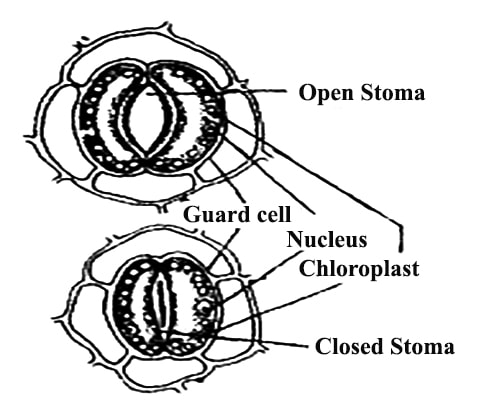Stomata are present in leaves, young stems, calyx and corolla of flower etc. a small pore encircled by two guard cells is called a Stoma (also stomate; plural stomata). Cell walls of guard cells adjacent to stomata are thick but the walls on opposite side are thin. There present a large nucleus and many chloroplasts. The swelling and looseness of the guard cells regulate the opening and closing of stomata. When the guard cells swell up the stomata opens and when it loses the stomata closes.
The ventral surface of dorsiventral leave bears more stomata. Stomata are present in the sporophyte generation of all land plant groups except liverworts. Dicotyledons usually have more stomata on the lower epidermis than the upper epidermis.

Plants can breathe, but they do it through tiny openings in leaves called stomata. Stomata open and close to allow the intake of carbon dioxide (CO2) and the release of oxygen. It’s very important that they do this because this is the very oxygen that we ourselves need to breathe.










